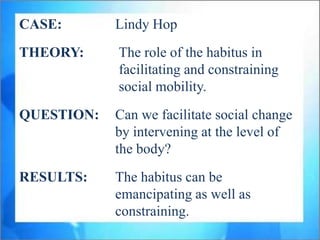Lisa Wade - The Emancipatory Promise of the Habitus
- 1. Lisa Wade, PhD Professor of Sociology Occidental College The Emancipatory Promise of the Habitus
- 4. CASE: Lindy Hop
- 5. CASE: Lindy Hop âTheory building isnât about adding new knowledge, itâs about changing the nature of the knowledge that we have.â
- 6. CASE: Lindy Hop THEORY: The role of the habitus in facilitating and constraining social mobility.
- 8. Pierre Bourdieu âĒ Economic Capital: money you got.
- 9. Pierre Bourdieu âĒ Economic Capital: money you got. âĒ Social Capital: people you know.
- 10. Pierre Bourdieu âĒ Economic Capital: money you got. âĒ Social Capital: people you know. âĒ Cultural Capital: culturally-valorized resources.
- 11. Pierre Bourdieu âĒ Economic Capital: money you got. âĒ Social Capital: people you know. âĒ Cultural Capital: culturally-valorized resources. â Objectified: things you own.
- 12. Pierre Bourdieu âĒ Economic Capital: money you got. âĒ Social Capital: people you know. âĒ Cultural Capital: culturally-valorized resources. â Objectified: things you own. â Institutionalized: nods from important and recognized institutions.
- 13. Pierre Bourdieu âĒ Economic Capital: money you got. âĒ Social Capital: people you know. âĒ Cultural Capital: culturally-valorized resources. â Objectified: things you own. â Institutionalized: nods from important and recognized institutions. â Embodied: external wealth converted to bodily appearances, capacities, and knowledges.
- 14. Pierre Bourdieu Habitus: Our body and its knowledges, as it is shaped by a lifetime of physical repetition.
- 16. Maurice Merleau-Ponty âI can type and to that extent âI knowâ where the various letters are on the keyboard. I do not have to find the letters one by one... My fingers just move in the direction of the correct keys. Indeed, when I am in full flow, I seem actually to be thinking with my fingers in the respect that I do not know in advance of typing exactly what I will say.â
- 17. Maurice Merleau-Ponty âIt is not just that I do not need to think about where the keys are... The break with reflective thought is more severe than this. I could not give a reflective, discursive account of the keyboard layout. I do not âknowâ where the keys are and to make any half decent attempt at guessing I have to imagine I am typing and watch where my fingers head for when I come to the appropriate letter.â
- 19. Maurice Merleau-Ponty ââĶ pushing the brakes becomes as ânaturalâ a way of stopping to me as halting in my stride, [and] I incorporate the external space of the car; its power, velocity, and acceleration... I feel its size and speed as surely as that of my own body... I do not think about the car. I think as the car, from the point of view of the carâĶâ
- 20. Fit: When your habitus is well-suited to a social context.
- 21. Sandra Lee Bartky âIn groups of men, those with higher status typically assume looser and more relaxed postures; the boss lounges comfortablyâĶ while the applicant sits tense and rigid on the edge of his seat. Higher-status individuals may touch their subordinates more than they themselves get touched; they initiate more eye contract and are smiled at by their inferiors more than they are observed to smile in return.â
- 22. CASE: Lindy Hop THEORY: The role of the habitus in facilitating and constraining social mobility. QUESTION: Can we facilitate social change by intervening at the level of the body?
- 24. Beginning Dancers âĒ A feminist-friendly community
- 25. Beginning Dancers âĒ A feminist-friendly community â Performances
- 26. Beginning Dancers âĒ A feminist-friendly community â Performances â Gender-neutral language
- 27. Beginning Dancers âĒ A feminist-friendly community â Performances â Gender-neutral language â Role switching
- 28. Beginning Dancers âWhen Iâm dancing with Rebecca, we switch off all the time. I lead, she follows. She leads, I follow. Sometimes she initiates the switch and sometimes I do. Sometimes it looks like sheâs following, but sheâs leading, and vice versa.â
- 29. Beginning Dancers âĒ A lindy hop habitus â For men, shaking off hypermasculinity and fear of femininity
- 30. Beginning Dancers âĒ A lindy hop habitus â For men, shaking off hypermasculinity and fear of femininity âĒ No brute force
- 31. Beginning Dancers âĒ A lindy hop habitus â For men, shaking off hypermasculinity and fear of femininity âĒ No brute force âĒ Add feminized body movements
- 32. Beginning Dancers âĒ A lindy hop habitus â For women, shaking off hyperfemininity.
- 33. Beginning Dancers âĒ A lindy hop habitus â For women, shaking off hyperfemininity âĒ Drop feminine habits
- 34. Beginning Dancers âĒ A lindy hop habitus â For women, shaking off hyperfemininity âĒ Drop feminine habits âĒ Have weight
- 36. Intermediate Dancers âĒ Disconnection â Leads offer follows independence
- 37. Intermediate Dancers âĒ Disconnection â Leads offer follows independence â Follows take it
- 38. Intermediate Dancers âThe leader can suggest something to the follower. But I pay attention to how strong the lead is. If itâs not very strong, I may do something different. Iâm still not breaking what he wanted me to do because I sensed how strongly he meant it.â
- 39. Intermediate Dancers âTake the suggestion that the lead gives you. If you donât like it, you can change it once you have it.â
- 41. Advanced Dancers âĒ Connection â via bodies
- 42. Advanced Dancers âSomeoneâs got to initiate, but itâs not that one person is leading and one person is following. Both are leading and following. I donât even like those words. I use initiating and following through. Both leads and follows do bothâĶâ
- 43. Advanced Dancers âFlow with your partner. Whatever they doâadjust.â
- 44. Advanced Dancers The âdynamic is a lot more complicated that the lead leads and the follow follows.â
- 45. Advanced Dancers âĒ Connection â via bodies â via the music
- 46. Advanced Dancers âIdeally, not all leads and follows react the same way to music because theyâre two different people. Watch a movie together and there are different opinions. Dance explores these same kinds of differences. When I dance with Joy, I try to listen to her [with my body] and I think, âOh, Iâve never heard that song that way before.ââ
- 47. CASE: Lindy Hop THEORY: The role of the habitus in facilitating and constraining social mobility. QUESTION: Can we facilitate social change by intervening at the level of the body? RESULTS: The habitus can be emancipating as well as constraining.
- 48. Questions? Lisa Wade, PhD www.lisa-wade.com @lisadwade Credits: âĒ David Holmes Photography âĒ Laura Malischke Photography âĒ Kevin St. Laurent and Jo Hoffberg, iDance.net âĒ PBS, People Like Us âĒ Missouri Historical Society âĒ www.prblog.typepad.com âĒ www.theclassywoman.blogspot.com

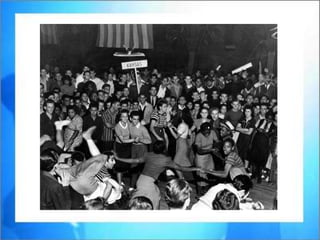
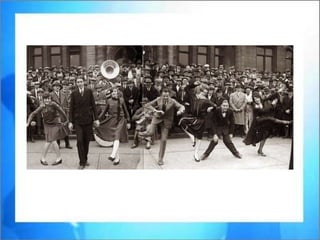

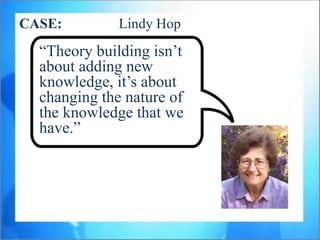
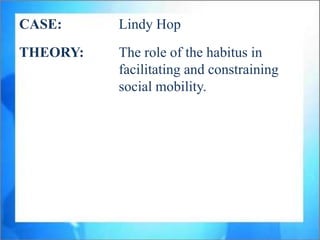
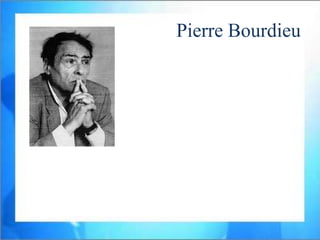






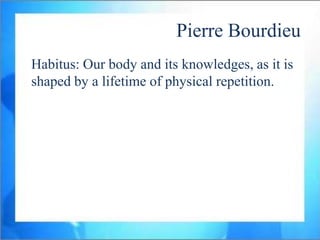


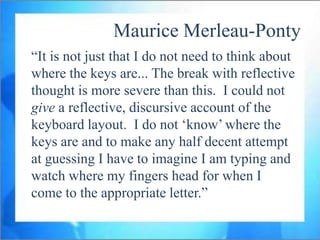

![Maurice Merleau-Ponty
ââĶ pushing the brakes becomes as ânaturalâ a
way of stopping to me as halting in my stride,
[and] I incorporate the external space of the
car; its power, velocity, and acceleration... I
feel its size and speed as surely as that of my
own body... I do not think about the car. I
think as the car, from the point of view of the
carâĶâ](https://image.slidesharecdn.com/wade-talk-theemancipatorypromiseofthehabitus-111027170302-phpapp01/85/Lisa-Wade-The-Emancipatory-Promise-of-the-Habitus-19-320.jpg)
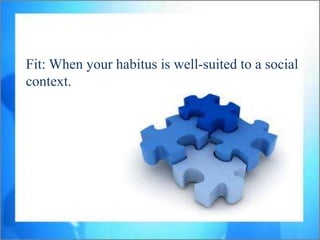
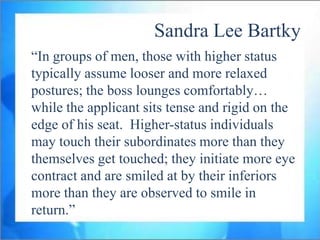

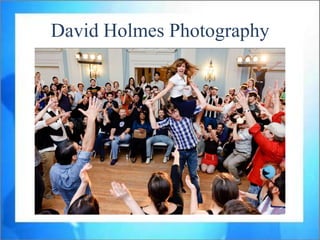
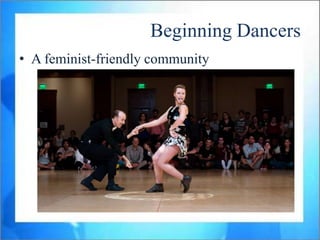
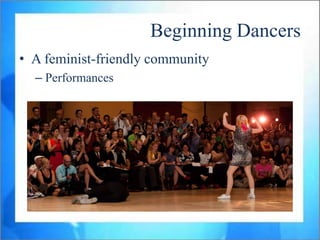
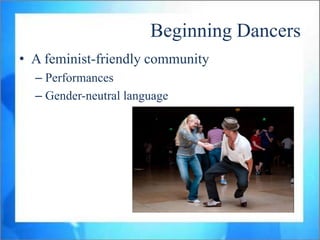
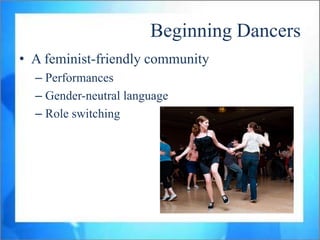
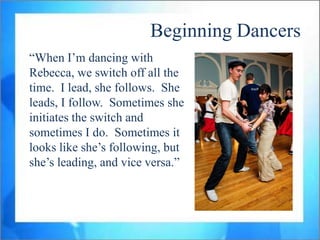
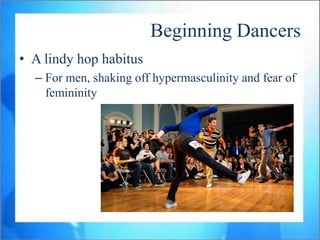
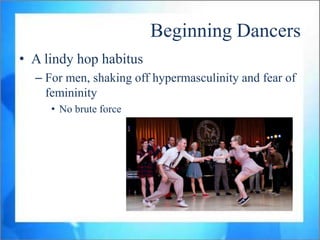
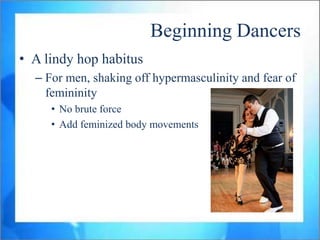
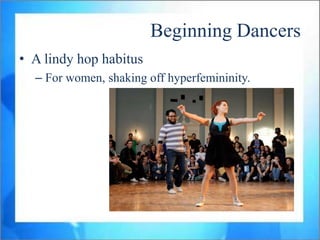
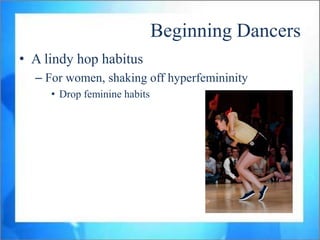
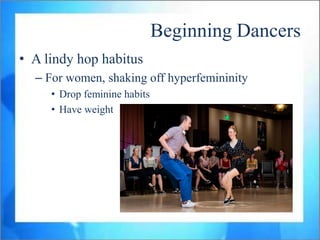
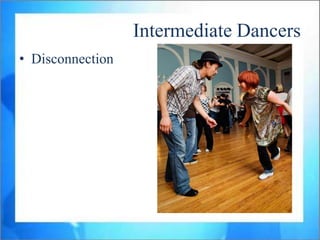
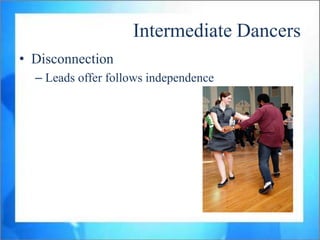
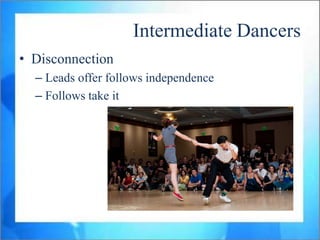
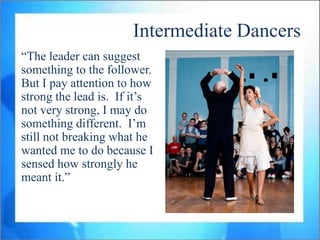

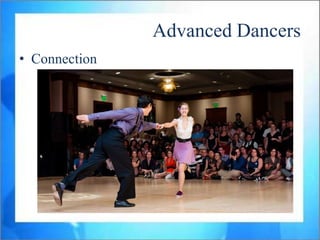
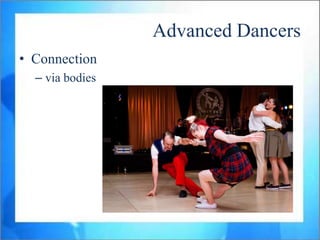
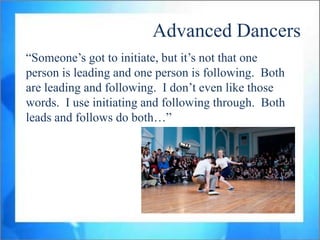
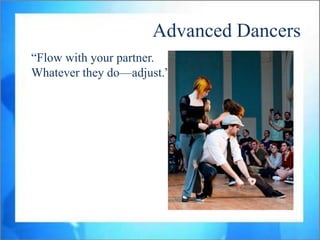
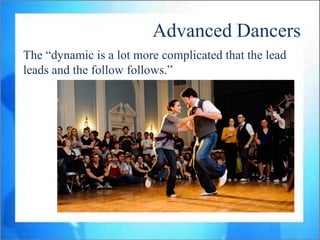
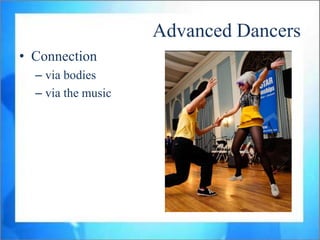
![Advanced Dancers
âIdeally, not all leads and
follows react the same way
to music because theyâre two
different people. Watch a
movie together and there are
different opinions. Dance
explores these same kinds of
differences. When I dance
with Joy, I try to listen to her
[with my body] and I think,
âOh, Iâve never heard that
song that way before.ââ](https://image.slidesharecdn.com/wade-talk-theemancipatorypromiseofthehabitus-111027170302-phpapp01/85/Lisa-Wade-The-Emancipatory-Promise-of-the-Habitus-46-320.jpg)
